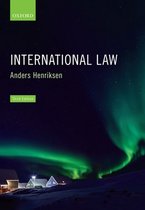Samenvatting
Samenvatting International and European Law (uitwerking problemen + hoorcolleges)
- Instelling
- Erasmus Universiteit Rotterdam (EUR)
- Boek
- International Law
Dit is een samenvatting van het vak international and European law bachelor jaar 1. Het bevat een uitwerking van alle 8 de problemen inclusief hoorcolleges. De samenvattingen zijn bijgewerkt na de werkgroep en worden door medestudenten als zeer overzichtelijk beschouwd. Persoonlijk heb ik met deze ...
[Meer zien]





